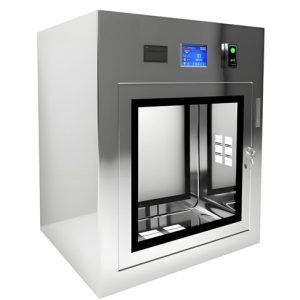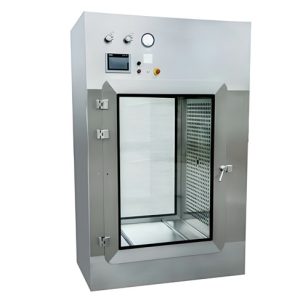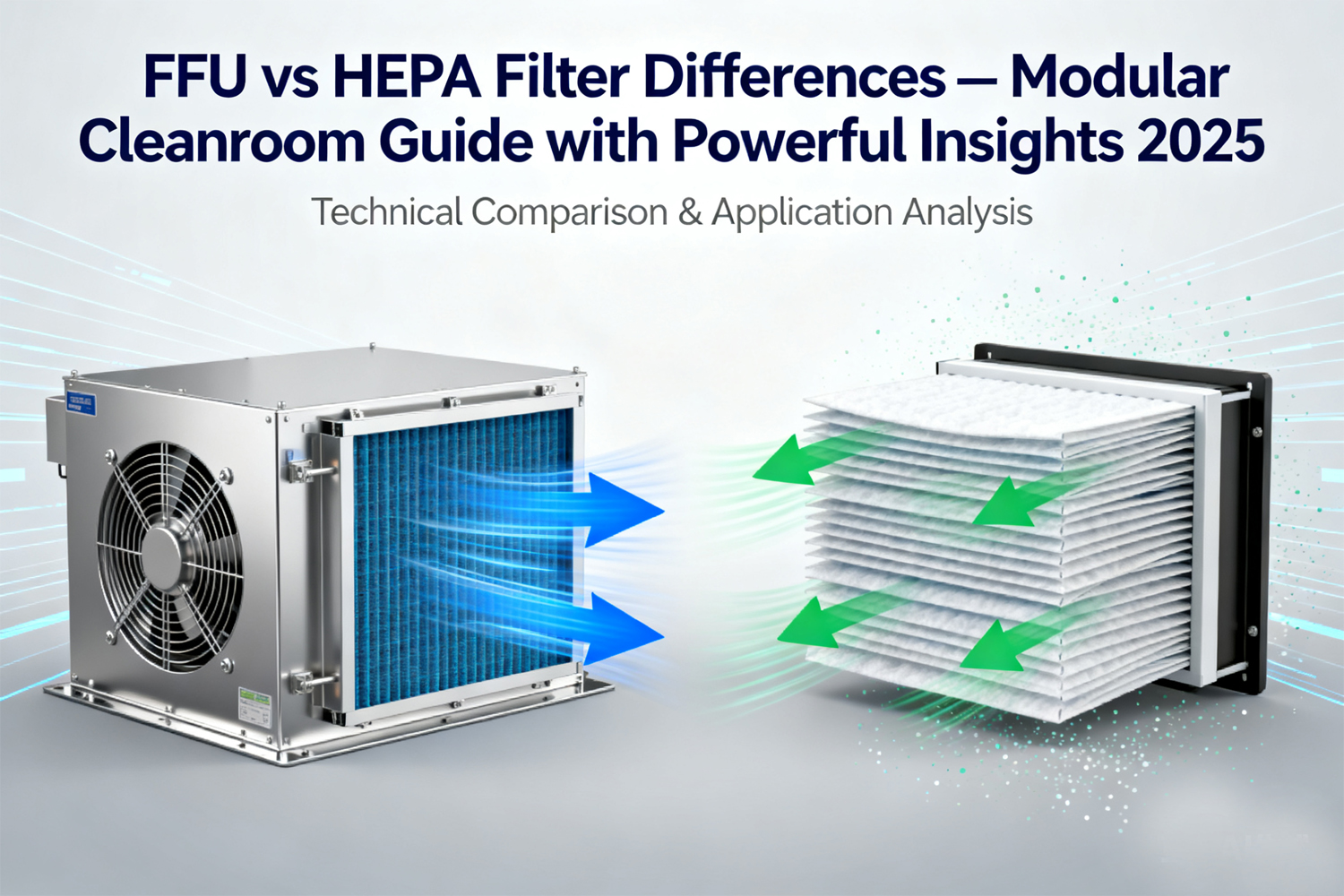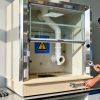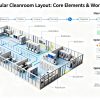Account
-
Safe payment options
We only work with the most secure payment systems.
-
Product return within 30 days
We do our very best to keep our customers happy.
No products in the cart.
You dont have any products in your cart yet, add a few products to experience this experience.
Add $500.00 to cart and get free shipping!
To see and take advantage of all discounted products.
Click HereFFU vs HEPA Filter Differences — Modular Cleanroom Guide with Powerful Insights 2025
Table of Contents
ToggleMaking the Right Choice for Your Modular Cleanroom
When designing modular cleanrooms, understanding the critical FFU vs HEPA filter differences becomes essential for optimal performance and cost-efficiency. This comprehensive guide from Deiiang™ experts provides data-driven insights to help you make informed decisions between Fan Filter Units (FFUs) and centralized HEPA filtration systems.
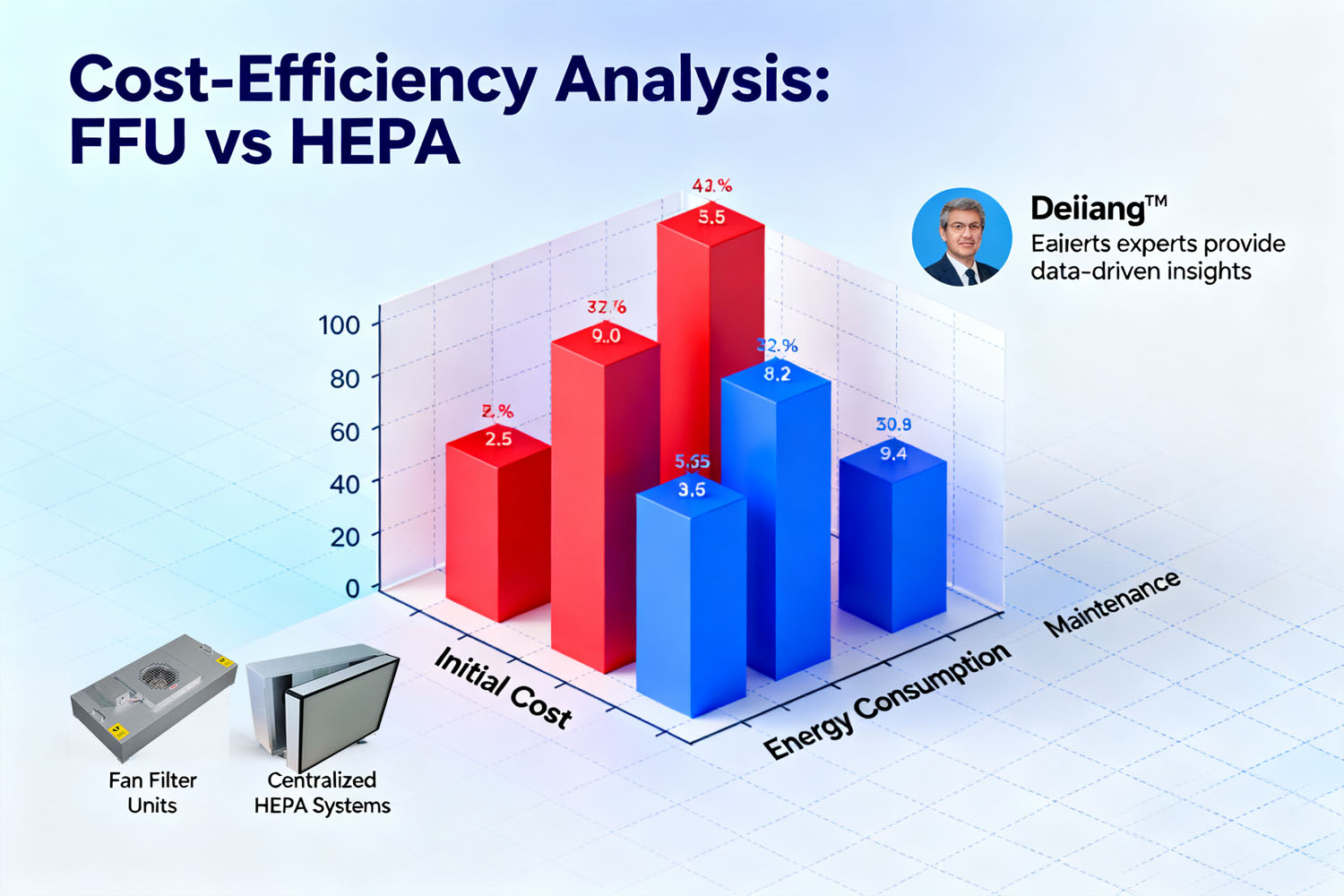
Modular cleanroom FFU vs HEPA filter differences
Quick Decision Guide
- ✓Choose FFU when: Need rapid deployment, frequent layout changes, limited ceiling space, or budget constraints
- ✓Choose Central HEPA when: Large facilities (>500 m²), stable layouts, energy efficiency priorities, or minimal maintenance requirements
- ✓Hybrid Solution: Combine both for zones with varying cleanliness requirements or phased expansion plans
The fundamental FFU vs HEPA filter differences extend beyond mere installation methods to impact operational costs, flexibility, and long-term performance. Understanding these distinctions early in your cleanroom planning process can save significant resources and prevent costly redesigns.
Fundamental Concepts & Terminology
FFU (Fan Filter Unit)
Self-contained modules integrating fan motor, HEPA/ULPA filter, and housing. Typical Deiiang™ FFUs deliver 0.45-0.9 m/s face velocity with customizable dimensions.
HEPA/ULPA
HEPA: 99.97% efficiency on 0.3μm particles. ULPA: 99.999% on 0.12-0.25μm particles. Deiiang™ filters exceed ISO 14644 standards with verified performance.
Key Metrics
MERV (1-20), ACH (Air Changes/Hour), ISO 14644 Classes (1-9). For ISO Class 7, typical ACH = 60-90, while ISO Class 5 requires 240-480 ACH.
Proper comprehension of FFU vs HEPA filter differences begins with mastering these fundamental concepts, as they form the basis for all subsequent design decisions and performance calculations in modular cleanroom environments.
Detailed Technical Comparison
| Parameter | FFU Systems | Central HEPA Systems |
|---|---|---|
| Initial Cost | $800-1,200 per unit (Deiiang™ premium models) | $150-300/m² + ductwork ($75-150/m²) |
| Energy Consumption | 120-350W per unit (0.45-0.9 m/s) | Central fan: 15-25 kW for 500 m² facility |
| Filter Efficiency | HEPA: 99.97-99.995% @ 0.3μm ULPA: 99.999% @ 0.12μm |
Identical filter media performance |
| Pressure Drop | 150-250 Pa (clean filter) Replace at 450-600 Pa |
System total: 500-900 Pa including duct losses |
| Noise Level | 52-68 dB(A) at 1.5m distance | Remote fan: 65-80 dB(A) (mechanical room) |
| Maintenance Cycle | Filter: 3-5 years Motor: 5-7 years |
Filter: 5-8 years Duct cleaning: 2-3 years |
The comprehensive analysis of FFU vs HEPA filter differences reveals that FFUs typically offer superior flexibility and faster deployment, while central systems provide better energy efficiency in large-scale applications. For instance, a 200 m² ISO Class 6 cleanroom using Deiiang™ FFUs achieves 75 ACH with 45 units consuming approximately 11.25 kW total, whereas a central system might consume 9-12 kW but requires significant ductwork investment.
Understanding these detailed FFU vs HEPA filter differences enables engineers to optimize both capital and operational expenditures while maintaining compliance with relevant cleanroom standards and performance requirements.
Selection Decision Matrix
Deiiang™ Cleanroom Selection Calculator
Recommended Solution
Our systematic analysis of FFU vs HEPA filter differences demonstrates that for facilities under 300 m² with potential layout modifications, FFU systems typically offer 15-30% lower total cost of ownership over 5 years. The decision matrix above incorporates key variables including cleanroom classification, operational flexibility requirements, and lifecycle cost considerations.
Cost & Energy Consumption Analysis
Initial Investment
FFU System: $90,000-120,000 (100 m² ISO 7)
Central HEPA: $75,000-95,000 + $25,000 ductwork
FFU installation is typically 40-60% faster, reducing labor costs by 25-35%.
5-Year Operational Cost
FFU System: $45,000-65,000 (energy + maintenance)
Central HEPA: $35,000-50,000 (more efficient at scale)
Energy typically constitutes 55-70% of operational costs.
The financial implications of FFU vs HEPA filter differences become particularly significant when considering energy consumption patterns. For example, a Deiiang™ FFU array maintaining ISO Class 7 conditions in a 150 m² facility consumes approximately 18,000 kWh annually ($2,160 at $0.12/kWh), while an optimally designed central system might consume 14,000-16,000 kWh for the same application.
Installation, Maintenance & Compliance
FFU Installation Best Practices
1. Grid Planning & Layout
Plan FFU placement to achieve uniform coverage (typically 80-90% ceiling coverage for ISO 5). For 2.4×1.2m Deiiang™ FFUs in ISO 7, spacing of 3-4m centers is typical.
2. Sealing & Leak Testing
Use closed-cell gasketing (neoprene or silicone) with compression ≥25%. Perform DOP/PAO testing at 10-20% above operating pressure differential.
Proper maintenance protocols highlight another area of FFU vs HEPA filter differences. FFUs require individual filter replacement (typically 3-5 year intervals) but offer the advantage of targeted maintenance without full system shutdown. Central systems demand comprehensive shutdowns for filter changes but benefit from longer filter life (5-8 years) due to pre-filtration stages.
Both systems must comply with ISO 14644 standards for particle counts, airflow velocity uniformity (±20% of average), and leak testing (<0.01% for HEPA, <0.005% for ULPA). Deiiang™ systems include comprehensive documentation packages demonstrating compliance with FDA, EU GMP, and other regulatory requirements.
Common Mistakes & Risk Mitigation
Critical Errors in FFU Implementation
- Insufficient FFU coverage: Results in dead zones with particle accumulation. Solution: Maintain ≥80% ceiling coverage for ISO 5, ≥50% for ISO 8.
- Poor airflow balancing: Causes cross-contamination between zones. Solution: Implement individual speed control with continuous monitoring.
- Neglecting return air path design: Creates pressure instability. Solution: Ensure return air grille area ≥ supply area × 1.2.
Understanding the nuanced FFU vs HEPA filter differences helps prevent costly design errors. For example, attempting to use FFUs in facilities exceeding 500 m² without proper zoning can lead to operational instability and 20-30% higher energy consumption compared to properly designed central systems.
Case Studies & Real-World Examples
Case Study: Pharmaceutical R&D Cleanroom
Facility: 180 m² modular cleanroom for vaccine development
Challenge: Frequent reconfiguration (3-4 times annually) with ISO 5-7 zoning
Solution: Deiiang™ Smart FFU System with 67 units (84% ceiling coverage)
| Parameter | Before (Central HEPA) | After (FFU System) |
|---|---|---|
| Installation Time | 14 weeks | 6 weeks (57% reduction) |
| Layout Change Cost | $25,000-40,000 per change | $3,000-8,000 per change |
| Energy Consumption | 92,000 kWh/year | 104,000 kWh/year (13% increase) |
| 5-Year TCO | $685,000 | $612,000 (11% savings) |
This case study illustrates how the strategic FFU vs HEPA filter differences decision resulted in significant operational flexibility and total cost savings despite slightly higher energy consumption. The ability to reconfigure zones with minimal disruption provided strategic advantages that outweighed the energy penalty.
Conclusion & Next Steps
The comprehensive analysis of FFU vs HEPA filter differences reveals that neither solution is universally superior—the optimal choice depends on specific operational requirements, facility characteristics, and long-term strategic objectives. FFUs excel in flexibility and rapid deployment scenarios, while central HEPA systems offer advantages in large-scale, stable operations where energy efficiency is paramount.
Ready to Optimize Your Cleanroom Design?
Download our comprehensive selection toolkit including detailed specifications, ROI calculator, and compliance checklist.
Frequently Asked Questions
What is the primary difference between FFU and HEPA systems?
The core distinction lies in system architecture: FFUs are self-contained, decentralized units with integrated fans and filters, while central HEPA systems utilize remote air handling units supplying multiple filter terminals through ductwork. This fundamental difference drives all other variations in performance, flexibility, and cost structure.
How do energy costs compare between FFU and central HEPA systems?
Central systems typically achieve 15-30% better energy efficiency in facilities larger than 300 m² due to larger, more efficient motors and reduced pressure losses. However, FFUs can be more efficient in smaller applications or when zoning allows selective operation of units. Actual performance depends on specific design parameters and operational patterns.
Can FFUs and central HEPA systems be combined?
Yes, hybrid approaches are increasingly common, particularly in facilities with varying cleanliness requirements. For example, maintaining ISO 5 environments with FFUs in critical zones while using central HEPA for ISO 7-8 background areas. This approach optimizes both energy efficiency and operational flexibility.




